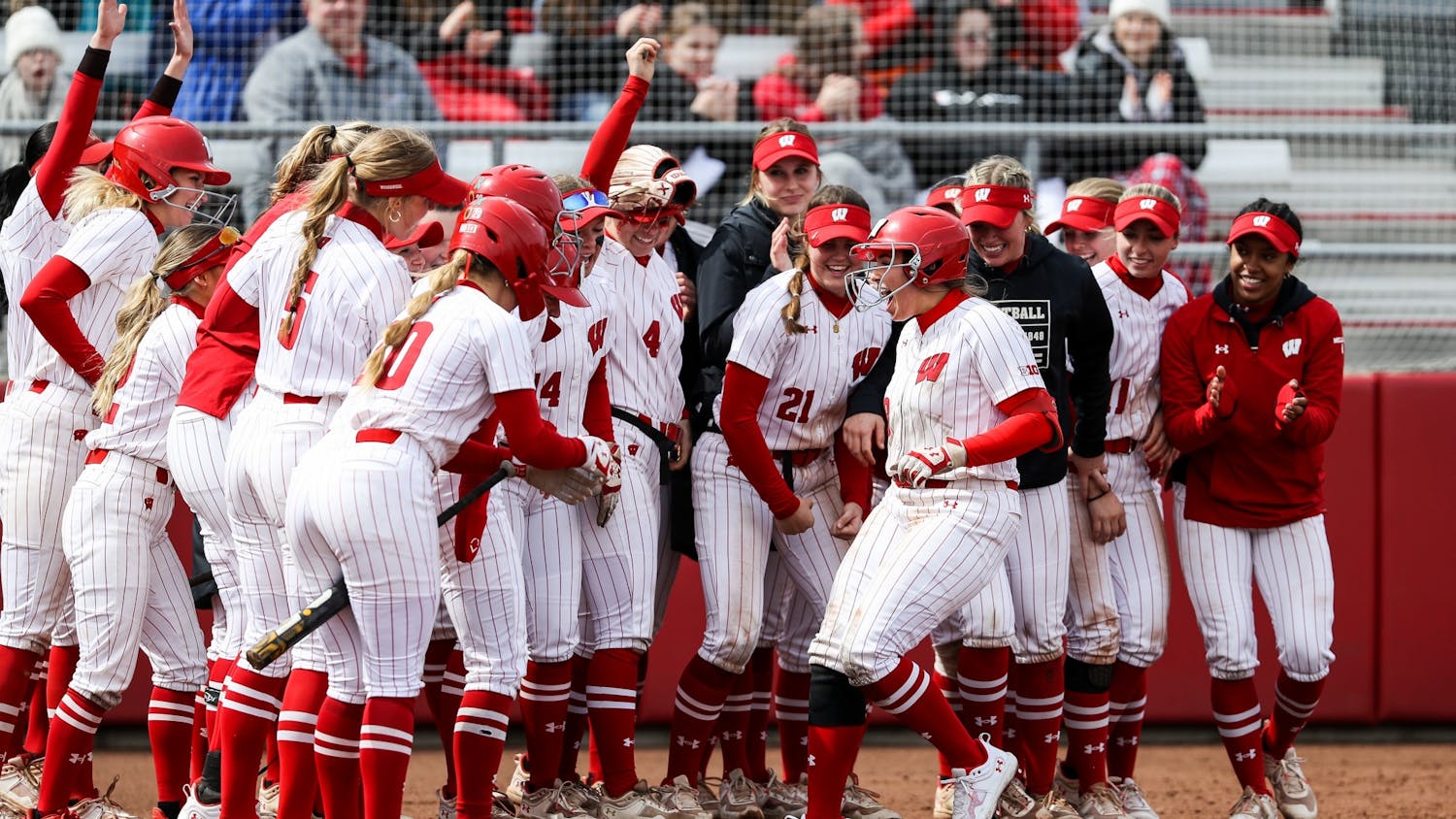Does Tanner McEvoy have a short leash if he struggles early?
Wisconsin’s quarterback competition has finally been settled. Redshirt junior Tanner McEvoy edged out fellow redshirt junior Joel Stave to earn the start in the Badgers’ Aug. 30 season opener against LSU, sources told the Milwaukee Journal Sentinel.
Stave started all 13 games last year, but McEvoy, who saw time at safety and wide receiver in 2013, beat out the incumbent starter and will play under center for the first time since 2012, when he started for Arizona Western.
McEvoy’s athleticism opens another dimension for Wisconsin’s offense. In contrast with Stave, who is more of a pocket passer, McEvoy is able scramble away from pressure to avoid taking sacks and he has the potential to make big plays on designed quarterback runs.
Given that this will be McEvoy’s first start at quarterback with UW, expect head coach Gary Andersen to allow him to work through any initial setbacks. He will have to show confidence in his decision and give McEvoy time to settle in and adjust to Wisconsin’s early opponents, even if the offense sputters at first.
Andersen stuck with Stave throughout all of 2013, even when the quarterback displayed inconsistency, throwing 13 interceptions on the year. This likely indicates that Andersen will let McEvoy play out the majority of the game, but there is the possibility that Stave could see some playing time.
If McEvoy has difficulty airing the ball out, Andersen may turn to Stave’s more experienced arm to attack the second level. This could be an effective way to change up the offense for a few plays at a time if McEvoy’s debut starts slow.
That being said, it appears that it’s McEvoy’s show now and he will take the vast majority of snaps this season.
Does UW avoid being one-dimensional on offense?
Wisconsin’s offense, although highly potent (34.8 points per game in 2013), struggles with striking a balance between the passing and running game. The Badgers had 557 rushing attempts last season, the fifth-most in the Big Ten Conference, and 355 pass attempts, which ranked second to last in the conference. This discrepancy was largely due to the fact that the Badgers simply did not need to pass when their running game was quickly picking up big chunks of yardage.
Four starters from the 2013 offensive line are back: redshirt senior tackle Rob Havenstein, redshirt senior guard Kyle Costigan, redshirt senior center Dallas Lewallen and redshirt junior tackle Tyler Marz. The experience on the offensive line should mean that Wisconsin can replicate 2013’s incredibly efficient running game. Led by the now-graduated running back James White and current junior Melvin Gordon, Wisconsin averaged 6.6 yards per rush in 2013.
With Gordon returning and sophomore running back Corey Clement expected to take considerably more handoffs this season, Wisconsin’s success on offense will once again rely primarily on the running game. Additionally, with the inexperienced Tanner McEvoy at quarterback, the Badgers need Gordon and Clement to perform well if the passing game does not click. UW could quickly become very one-dimensional on offense if McEvoy struggles to produce through the air, as was the case last season when Stave could not establish a consistent passing game at times.
Expect Wisconsin to try to mix up the play calling a little bit by integrating more play action passes to catch opponents off guard and generate yardage through the air. The speedy McEvoy is dangerous when he rolls out of the pocket, and his threat to run should draw secondaries in, which will allow UW wide receivers space to get open downfield.
Although the Badgers will play to their strengths and keep the ball in the hands of their talented backfield, a fresh start with McEvoy at quarterback could allow Wisconsin to develop a more balanced offensive scheme.
Can Corey Clement fulfill last year’s Melvin Gordon role?
First, it was Montee Ball and James White. Then, White took over the starting job and was complemented by Melvin Gordon. Now, it’s Gordon’s turn to be Wisconsin’s feature running back, while sophomore running back Corey Clement will step into the role of a change-of-pace option to spell the starter.
The key to Wisconsin’s two-headed monster approach to the running game that has been a staple since 2010 is that there has been little talent drop-off from the starting running back to the backup. This was especially the case in 2013, when White and Gordon rushed for 1,444 and 1,609 yards, respectively. The backs had an almost identical number of carries, as White rushed 221 times and Gordon had 206 attempts.
With Gordon entering the season as the starter, Clement’s contributions will likely come on third down situations and when Gordon needs rest. Standing at 5 feet, 11 inches and weighing 217 pounds, Clement is a powerful runner who could prove to be overwhelming to tired defensive opponents when he spells Gordon.
In 2013, Clement ran for 547 yards on just 67 carries, good for an average of 6.5 yards per carry. Clement also complemented White and Gordon’s scoring with seven touchdowns of his own, including a 75-yard scamper against Tennessee Tech Sept. 7.
With his unique combination of size and speed, Clement will prove to be a valuable cog in the Wisconsin offense, even if he does not get the same amount of carries that Gordon did last year in a similar role. Andersen has stated that he believes Clement can step up in crucial situations and pick up some yards to extend a drive or to pound the ball into the end zone. If Andersen can insert Clement at precisely the opportune times, his fresh legs will undoubtedly spell trouble for UW’s opponents this fall.






